Digital transformation software helps you modernize your business by using technology to improve how you work. Most organizations now rely on digital transformation, with over 90% adopting these tools in the past five years. You can see the impact in the table below:
| Organization Type | Adoption Rate |
|---|---|
| Overall Organizations | Over 90% |
| Enterprise Organizations | 66% |
| Small Businesses | 49% |
Digital transformation addresses challenges like slow decision-making, poor data management, and difficulty measuring business value. By using these solutions, you gain faster access to data, better insights, and improved agility.
What Is Digital Transformation Software
Definition and Purpose
Digital transformation software helps you change how your organization works by using technology to improve every part of your business. You do not just digitize old processes. You create new ways to deliver value and connect with customers. When you use digital transformation software, you can:
- Change products and services to fit modern needs.
- Improve how teams work together and share information.
- Make your business more flexible and ready for change.
- Increase customer satisfaction and loyalty.
- Boost productivity and profits.
Industry experts say digital transformation is a holistic process. You do not only update your tools. You also change your company culture and how you interact with partners and customers. You focus on short-term results like launching new digital services. Over time, you see bigger impacts such as better effectiveness and happier customers.
Digital transformation software gives you the tools to manage data, automate tasks, and make decisions faster. You can track supply chains, manage resources, and respond quickly to market changes. Most organizations now see digital transformation as essential. Over 91% are adopting or planning to adopt a digital-first strategy. Nearly all leaders agree that new technology is key for reaching digital transformation goals.
You may wonder how digital transformation software compares to traditional enterprise solutions. The table below shows the main differences:
| Feature | Traditional Software | ERP System |
|---|---|---|
| Integration | Limited, often isolated | Fully integrated modules |
| Real-Time Data | Rare; data often delayed | Centralized and up-to-date |
| Scalability | Low; hard to expand | High; designed for growth |
| Automation | Minimal; manual processes | Extensive; automates workflows |
| Cost Over Time | Can increase | Cost-efficient long-term |
| Reporting & Analytics | Basic, manual consolidation | Advanced, real-time, comprehensive |
Digital transformation software stands out because it offers real-time analytics, high scalability, and strong automation. You get advanced reporting and lower costs over time.
FanRuan’s Approach to Digital Transformation
FanRuan is a leader in digital transformation software. The company serves over 30,000 businesses and has completed more than 92,000 IT projects. FanRuan helps you turn raw data into insights that drive smart decisions.
You can use FanRuan’s suite of products to support your digital transformation journey. FineBI is a powerful example. FineBI gives you self-service analytics, real-time data analysis, and an intuitive drag-and-drop interface. You do not need coding skills to build dashboards or explore data. FineBI stands out from other digital transformation software because it offers:
| Feature | FineBI | Tableau | Power BI | Qlik Sense |
|---|---|---|---|---|
| Self-Service Analytics | Yes | Limited | Yes | Yes |
| Real-Time Data Analytics | Yes | Limited | Yes | Yes |
| User-Friendly Interface | Intuitive | Complex | User-Friendly | User-Friendly |
| Data Permission Control | Enterprise | Basic | Basic | Basic |
| OLAP Analysis | Yes | No | No | Yes |
| Advanced Analytics | Predictive | Limited | Limited | Limited |
| Chart Types | Over 60 | Limited | Limited | Limited |
| Scalability | High | Moderate | Moderate | Moderate |
| Pricing | Competitive | High | Moderate | Moderate |
You can use FineBI to connect to many data sources, analyze trends, and share insights across your organization. FanRuan’s products help you build a culture of data-driven decision-making. You empower your teams to work smarter and respond faster to changes.
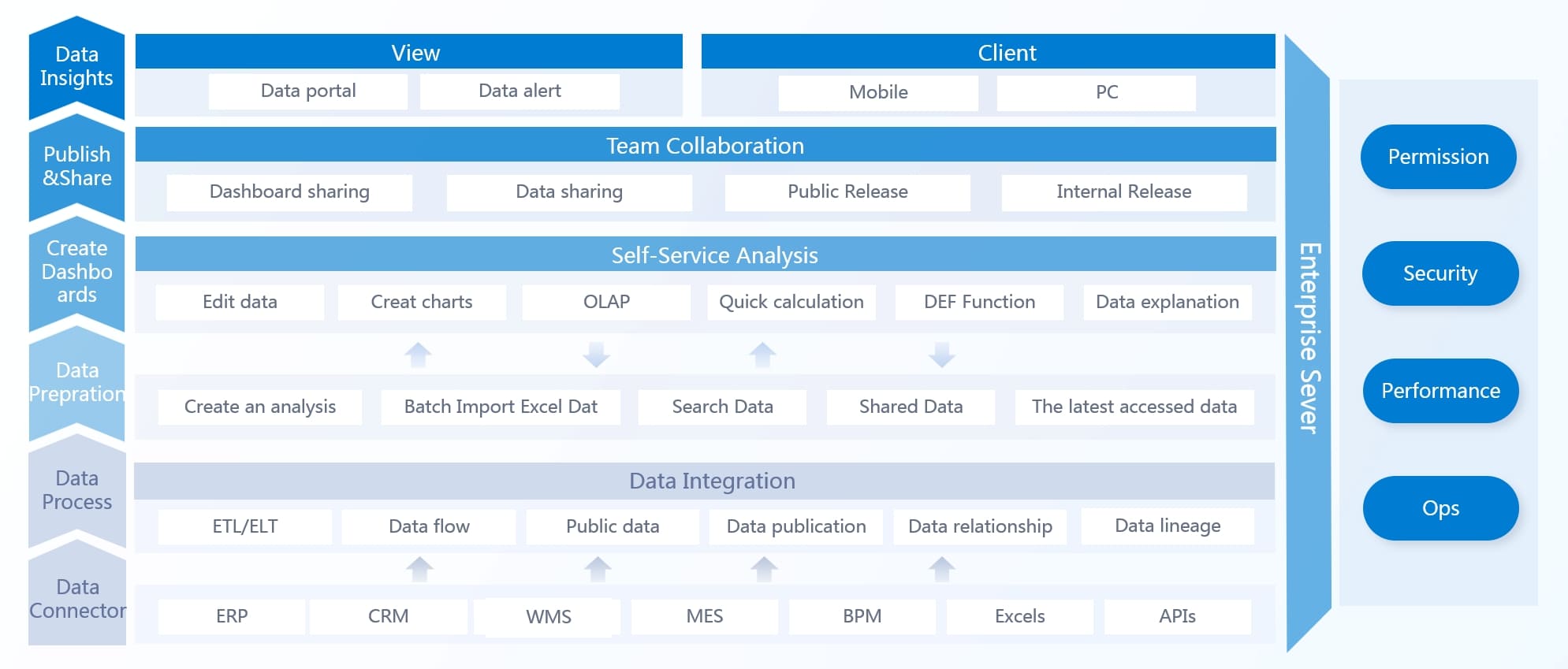
Digital transformation software from FanRuan gives you the flexibility and power to grow your business. You can improve workflows, automate reporting, and make better decisions every day. When you choose digital transformation, you set your organization up for long-term success.
How Digital Transformation Software Works

Core Technologies and Processes
You need to understand the main technologies that drive digital transformation. These technologies help you modernize your business and stay competitive. Most digital transformation software uses a mix of the following:
- Low-code and no-code platforms let you build applications quickly without deep programming skills.
- Automation and integration tools connect different systems and reduce manual work.
- Cloud technologies store your data securely and make it easy to access from anywhere.
- Artificial intelligence (AI) helps you analyze data and predict trends.
- Internet of Things (IoT) devices collect real-time data from machines and sensors.
- Real-time analytics give you instant insights for faster decisions.
Digital transformation software relies on processes like ETL (Extract, Transform, Load) and ELT (Extract, Load, Transform). These processes help you move and prepare data for analysis. ETL and ELT are essential for several reasons:
- They support business intelligence and reporting by moving data into a central place for analysis.
- They make it easy to combine data from many sources, giving you a complete view of your business.
- They help you migrate data smoothly when you upgrade systems.
- They organize and clean data for storage in data warehouses or data lakes.
- They ensure your data meets quality and compliance standards.
- They provide reliable information for data-driven decision-making.
- They lay the groundwork for advanced analytics and data science.
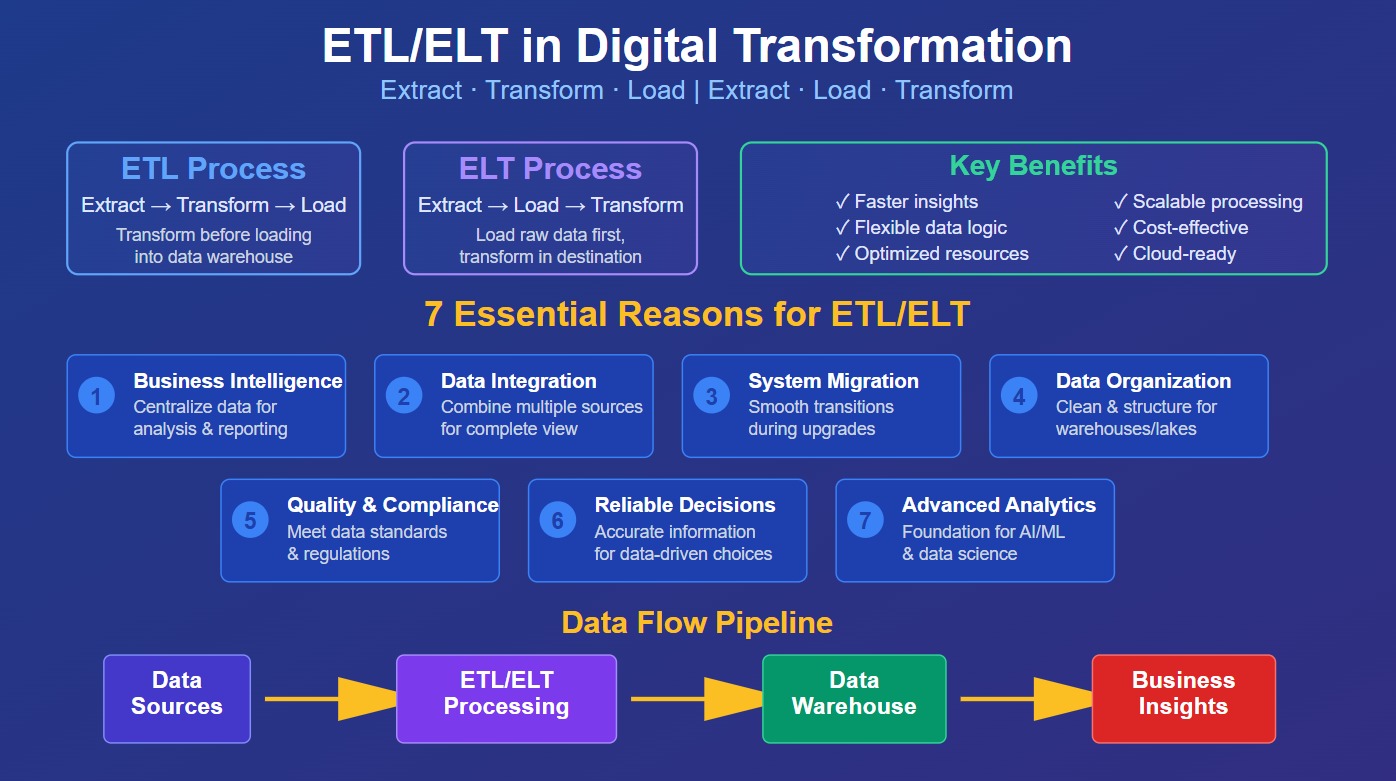
With ETL and ELT, you get faster access to insights, more flexibility in changing your data logic, and better use of your computing resources. These processes are vital for any digital transformation project because they improve how you manage, integrate, and analyze your data.
Data Integration with FineBI
Data integration is a key part of digital transformation. You need to bring together data from different sources to get a clear picture of your business. FineBI makes this process simple and efficient. You can connect to databases, cloud platforms, files, and APIs. FineBI uses methods like GET and POST to retrieve and submit data across systems.
| Method | Description |
|---|---|
| GET | Used for retrieving data from various management menus. |
| POST | Used for submitting data to other systems. |
FineBI also works with FineDataLink to handle complex data integration tasks. FineDataLink lets you build data pipelines that move information in real time. You can synchronize data across systems with almost no delay. FineDataLink uses middleware like Kafka to store data temporarily during transfers. It also uses Change Data Capture (CDC) to track and move only the changes in your data, making updates fast and efficient.
| Feature | Description |
|---|---|
| Data Pipeline | Enables real-time synchronization of data from source to target systems without computation. |
| Middleware (Kafka) | Temporarily stores data during synchronization to facilitate writing to target databases. |
| Change Data Capture (CDC) | Extracts incremental changes from source databases and propagates them to other systems in near real time. |
With FineBI and FineDataLink, you can break down data silos and create a unified data environment. This integration supports your digital transformation by making sure everyone in your organization works with the same, up-to-date information.
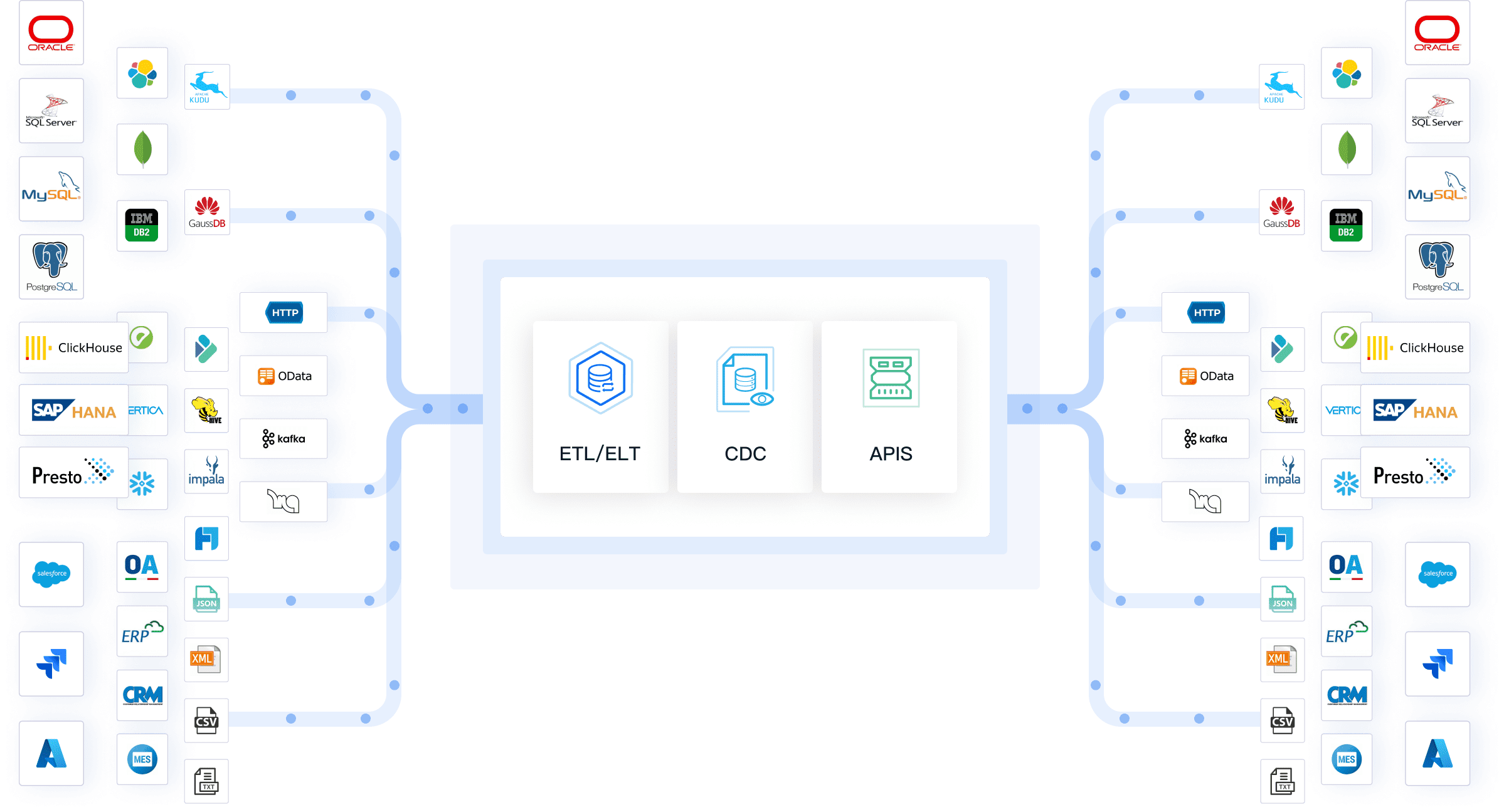
Tip: When you integrate your data sources, you make it easier to analyze trends, spot problems, and find new opportunities.
Real-Time Analytics and Automation
Real-time analytics is a game-changer for digital transformation. You get live dashboards that show critical business data as it happens. This instant access helps you make quick decisions and respond to changes right away. Real-time analytics removes data silos and keeps all departments aligned. You can anticipate market shifts, solve problems before they grow, and plan smarter strategies.
- Live dashboards provide instant access to critical business data, helping you act fast.
- Real-time analytics lets you spot issues early and fix them before they become bigger problems.
- You can adjust your operations quickly to match market changes, improving efficiency.
- Real-time insights help you make agile decisions, which is crucial in a fast-moving market.
- Quick responses to customer needs build trust and loyalty.
Automation is another core feature of digital transformation software. You can use AI-powered chatbots to handle customer questions automatically. Digital accounting tools streamline billing and reduce manual errors. These automation features save you time and let your team focus on higher-value work.
| Automation Feature | Description |
|---|---|
| AI-powered chatbots | Automatically sorts customer queries, enhancing response efficiency. |
| Digital accounting tools | Streamlines billing processes, reducing manual errors and saving time. |
When you combine real-time analytics with automation, you create a powerful digital transformation engine. You can monitor your business, automate routine tasks, and make better decisions every day. This approach helps you stay ahead of the competition and deliver more value to your customers.
Key Features of Digital Transformation Software
Self-Service Analytics with FineBI
You can unlock the power of data with self-service analytics in FineBI. This feature lets you create dashboards and charts without coding. You drag and drop data to build reports that fit your needs. You do not have to wait for IT support. You can analyze trends, spot issues, and share insights instantly. FineBI supports large datasets and multi-dimensional analysis, so you can handle complex business questions with ease.
| Feature Description | Details |
|---|---|
| Drag-and-Drop Functionality | Create dashboards and charts without coding. |
| Multi-Dimensional Analysis | Perform complex analyses for various business needs. |
| Timely Insights | Identify data issues quickly and reduce risks. |
| Large Data Support | Analyze very large datasets efficiently. |
| Real-Time Data Sharing | Share insights across your organization instantly. |
- Self-service analytics lets you access and analyze data independently.
- You reduce routine requests to IT, so your team can focus on bigger projects.
- You customize your insights, which helps build a data-driven culture.
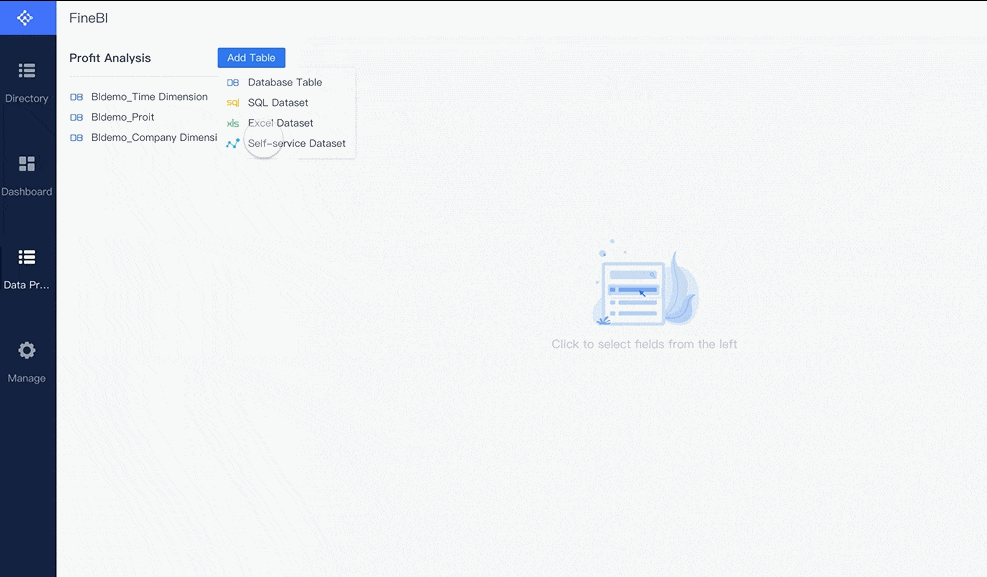
Tip: When you use self-service dashboards, you empower everyone in your organization to make smarter decisions.
Data Governance and Security
You need strong data governance to succeed with digital transformation. FineBI supports unified data models, end-to-end data lineage, and integrated data quality tools. You control who can see sensitive information with role-based access controls. Built-in AI and machine learning help you classify data and detect anomalies. You can embed compliance and security into your system design, not just add them later.
- Centralize financial, operational, and people data.
- Monitor data quality and origins continuously.
- Protect sensitive information with access controls.
- Automate classification and anomaly detection.
- Align data initiatives with business goals and support scalable architectures.
You should conduct risk assessments before you start. You can train your team on security responsibilities and monitor access at all times. These steps help you meet regulations and keep your data safe.
Scalability and Flexibility
Digital transformation software must grow with your business. FineBI offers an in-memory computing engine that manages large volumes of data quickly. You can deploy FineBI on the cloud and scale your operations as you expand. Mobile app support lets your team access insights anywhere, increasing flexibility.
| Feature | Description |
|---|---|
| In-memory computing engine | Handles large data volumes and complex queries with fast response times. |
| Elastic cloud deployment | Scales operations as your organization grows. |
| Mobile app support | Access business insights anytime, anywhere. |
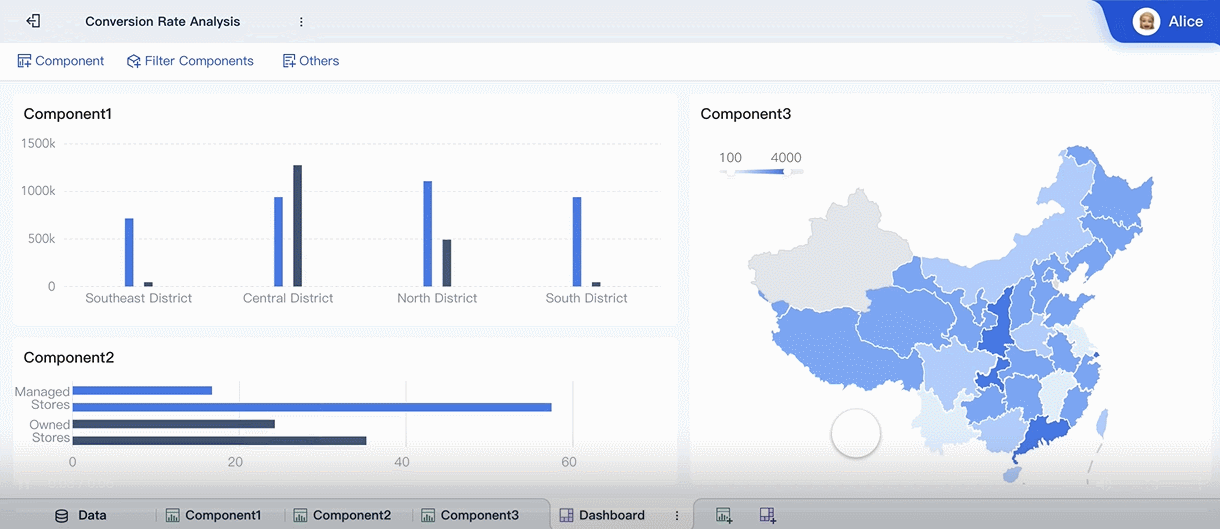
- Digital tools help you hire and manage talent remotely, increasing workforce diversity.
- Flexible remote work options make your company more competitive.
- You can offer affordable upskilling opportunities to your employees, supporting growth.
Note: Scalability and flexibility ensure your digital transformation efforts keep pace with changing business needs.
Business Benefits of Digital Transformation

Efficiency and Productivity Gains
When you start digital transformation, you see clear improvements in how your business runs. You can automate routine tasks and reduce manual errors. This means your team saves hours on each process. You also notice faster customer support and higher satisfaction scores. Many companies report that digital transformation helps them create new online sales channels and reach more customers. You can cut costs by streamlining your operations and using fewer resources.
A survey by Progress found that companies using digital strategies see better productivity, customer satisfaction, and operational efficiency.
Here are some ways digital transformation boosts your business:
- You replace manual work with digital tools, which increases efficiency.
- Automation helps you avoid mistakes and finish tasks faster.
- You can respond quickly to market changes and develop new products sooner.
| Benefit | Description |
|---|---|
| Increased Efficiency | Automation streamlines operations and reduces human error. |
| Cost Savings | Digital transformation brings both immediate and long-term cost reductions. |
| Improved Decision-Making | Data analysis enables better management decisions. |
Enhanced Decision-Making
Digital transformation gives you access to real-time data and clear insights. You can make decisions faster and with more confidence. When you use analytics tools like FineBI, you connect to many data sources and prepare your data for analysis. You turn raw numbers into easy-to-understand charts and dashboards. This helps you track key performance indicators and spot trends early.
| Evidence Description | Impact on Decision-Making |
|---|---|
| Digital technologies enhance information transparency by enabling efficient data collection and analysis. | Improves decision-making efficiency and reduces information asymmetry, enhancing corporate governance. |
| Digital transformation improves inventory management capabilities by optimizing management processes. | Enhances speed and quality of management decisions, optimizing internal management processes. |
You can also share insights with your team, so everyone works with the same information. Real-time analysis means you always have the latest data when making choices. This approach supports successful digital transformation and helps you measure progress with digital transformation metrics.
Real-World Success: TXC Corporation
TXC Corporation shows how a successful digital transformation can change a business. The company used FineBI to upgrade its digital systems. Employees now use advanced data visualization and analytics every day. This shift improved decision-making and made data more accessible across departments.
- TXC completed a comprehensive digital transformation upgrade.
- The company improved its data visualization capabilities.
- Decision-making processes became faster and more accurate.
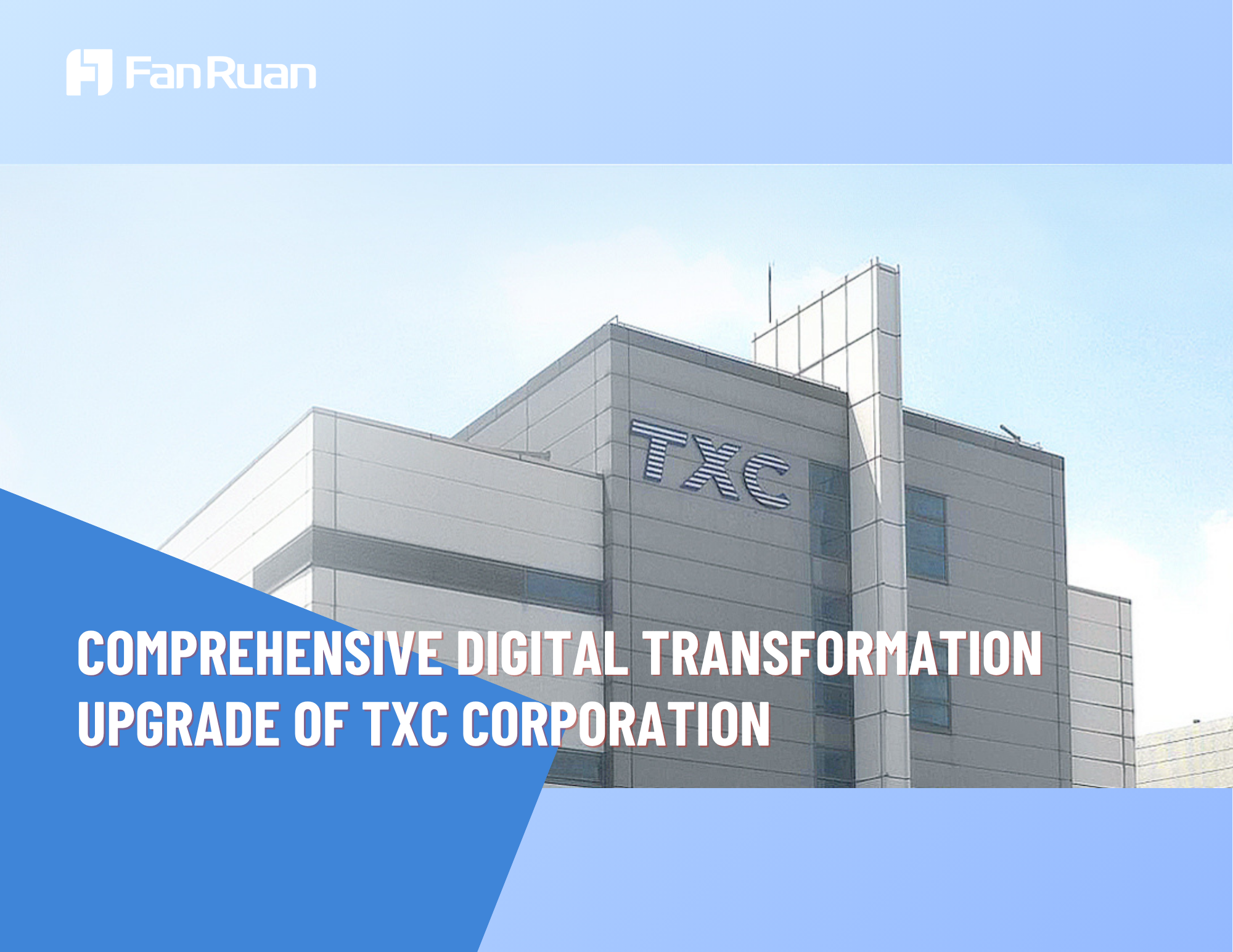
You can see similar results by starting your own digital transformation initiatives. When you track digital transformation metrics, you measure gains in efficiency, data access, and decision quality. These benefits drive business transformation and set you up for long-term success.
Implementing Digital Transformation Software
Strategy and Best Practices
You need a clear digital transformation strategy to guide your journey. Start by auditing your current state. Review your tools and processes to find areas that need improvement. Set SMART goals that are specific, measurable, achievable, relevant, and time-bound. Engage stakeholders from every department. Their input helps you see different perspectives and build support.
Here is a step-by-step approach:
- Audit your current processes and tools.
- Set realistic and measurable goals.
- Involve key stakeholders early.
- Prioritize projects using a matrix for impact and feasibility.
- Allocate budget and resources wisely.
- Choose technologies that can scale and adapt.
You should also digitize your operating platform and encourage a culture of change. Leadership must stay visible and communicate the vision. When leaders support the digital transformation journey, teams feel more confident and motivated.
| Evidence | Description |
|---|---|
| Sustained Leadership | Leaders must actively sponsor and communicate the strategy. |
| Collaboration Culture | Teams work better when they feel respected and involved. |
| Effective Communication | Clear messaging prevents confusion and siloed work. |
Tip: Empower employees to collaborate and focus on outcomes. This builds a strong foundation for your digital transformation strategy.
Overcoming Challenges
You may face resistance to change. Employees often feel uncertain about new tools. Software sprawl can happen when departments choose different solutions without IT guidance. Training is another challenge. Many teams struggle to learn new systems quickly. Ongoing support is essential for success.
| Challenge | Description |
|---|---|
| Resistance to change | Employees may resist new workflows. |
| Software sprawl | Multiple tools can create confusion and inefficiency. |
| Insufficient training | Teams need effective, ongoing training. |
| Lack of support | Continuous help is needed after launch. |
FanRuan offers support and training resources to help you overcome these barriers. You get access to online and offline training, responsive technical support, and resources for collaboration. FanRuan’s solutions help you improve data utilization and break down silos. You can build a unified platform for real-time data access and decision-making.
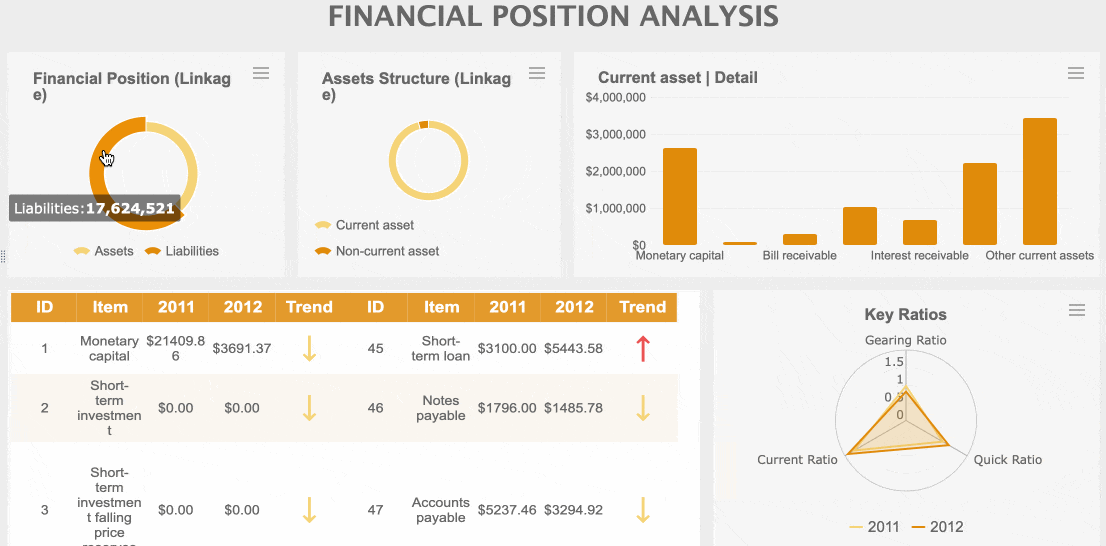
Measuring Success
You need to measure the impact of your digital transformation strategy. Track key performance indicators (KPIs) across customer, employee, financial, and project metrics. Use benchmarks to compare your progress. Collect data on customer satisfaction, adoption rates, and cost savings. Analyze this data with analytics tools like FineBI.
| Category | KPIs |
|---|---|
| Customer-focused | CSAT, NPS, engagement, retention |
| Employee engagement | Productivity, adoption rates, engagement scores |
| Financial performance | TCO, revenue growth, ROI |
| Project management | Milestone achievement, completion rates, budget adherence |
| Organizational change | Sentiment, change adoption rates |
Note: Regular reporting helps you see trends and adjust your digital transformation journey. You can use FanRuan’s analytics to generate reports and share insights with your team.
You have learned how digital transformation software helps you modernize your business. You can use tools like FineBI to analyze data, automate tasks, and improve decision-making. These solutions offer self-service analytics, strong data governance, and scalability.
- Assess your organization’s readiness for digital transformation.
- Explore FanRuan’s offerings to start your digital journey.
Take the next step. Empower your team with data-driven insights and drive business transformation.
Continue Reading about Digital Transformation Software
15 Best Software Reporting Tools for 2025
Top 10 Data Reporting Tools for Business Intelligence
Top 12 Reporting Tools Software Businesses Should Try
What is a Digital Dashboard and How Does It Work
FAQ

The Author
Lewis
Senior Data Analyst at FanRuan
Related Articles

Data Hub vs Data Lake Key Differences and Use Case Explained
Data hub vs data lake: Compare structure, governance, and use cases to choose the right solution for your data integration and analytics needs.
Howard
Nov 09, 2025

What is a Product Master Data Model and Why Does It Matter
A product master data model centralizes product information, ensuring accuracy, consistency, and better business decisions across all systems.
Howard
Nov 09, 2025

Implement Data Governance Use Cases for Better Data Quality
Implement data governance use cases to boost data quality, ensure compliance, and enable accurate, reliable decision-making across your organization.
Howard
Nov 09, 2025




